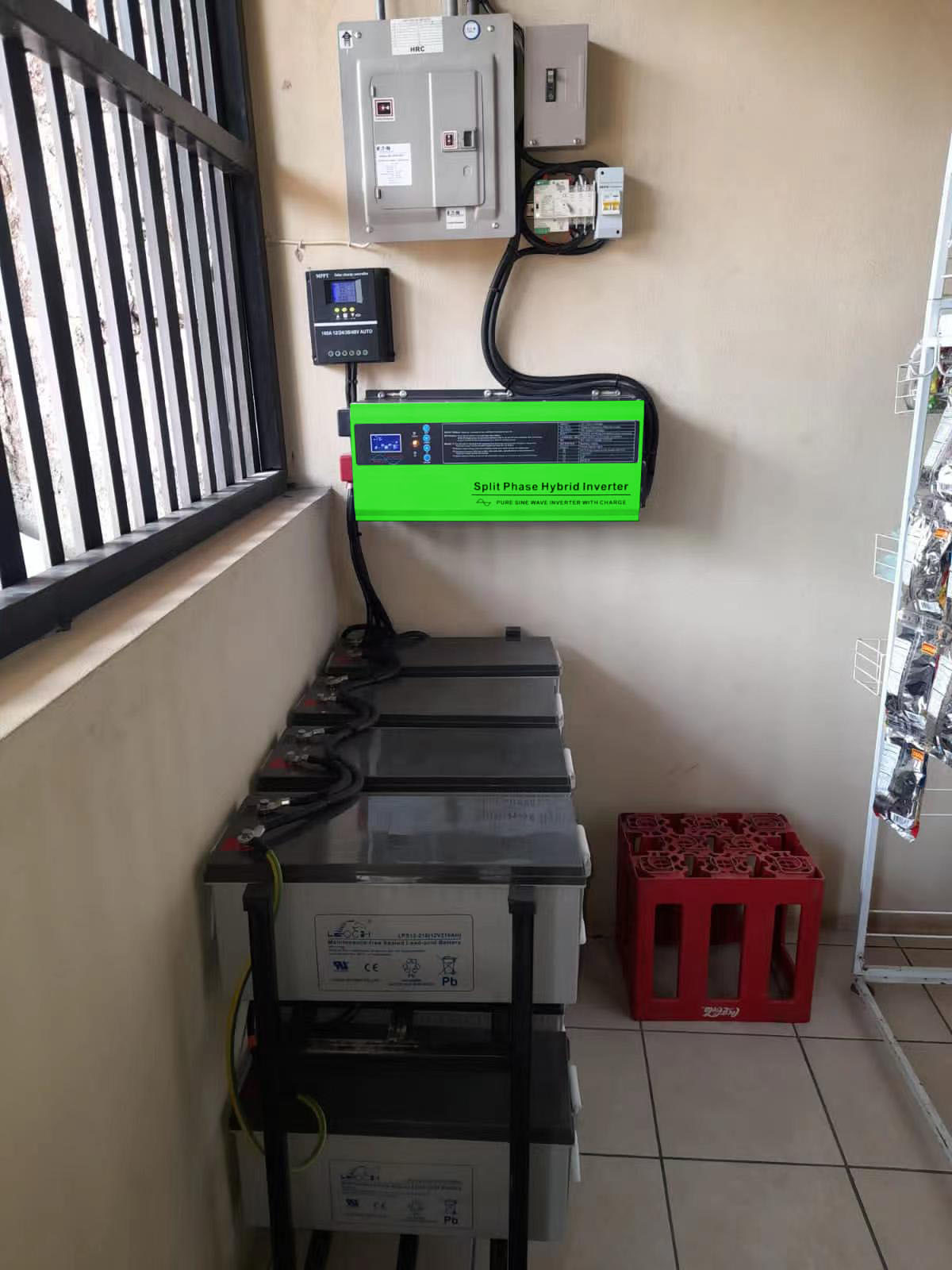What is a split-phase dual output inverter?
What is a split-phase inverter?
1. 120/240 Vac split-phase is a common single-phase three-wire neutral point distribution system in some countries in the United States and South America. The standard phase neutral voltage is 120 Vac. In general, the inverter will only output one voltage. But in some countries, appliances have two input voltages, such as 110VAC/220VAC or 120VAC/240VAC. At this time, if you use a solar power generation system, you need an inverter that can output two AC voltages.
We call this type of inverter that can output two voltages a split-phase inverter and it is sometimes called dual-phase, 2-phase/two-phase due to the 120-0-120 voltage configuration.
2. Split-phase inverters are suitable for applications in residential and small commercial offices, supermarkets or mobile homes.
3. "Normal" appliances and outlets in the house are split into two live wires and both are connected to neutral. Since the voltage difference between the single live and neutral wires alternates in steps of 120V, appliances running on 120V can be connected to either the neutral or the two live wires.
Very power-hungry devices can be built more efficiently if they can run on 240V. Using twice the voltage, they can receive twice the power for the same amount of current. .
North American homes have not one, but two electrical wires. The difference between them is that when one is pushing, the other is pulling.
To measure the power usage of all the appliances in the house and detect electrical signals, we need to sense the voltage and current of two live wires. The natural way to access both wires for voltage measurements is to connect to a 240V breaker - even if it has a small power demand, a 120V breaker won't give us all the information we need to test every device. These low-frequency split-phase inverters obtain 220V or 240V nominal input from the mains or generator to charge the battery, and use it as a UPS to store backup power for the home.
Our siwina popular pure sine wave split phase inverter chargers models:
3000W 24Vdc to 120/240V Inverter Charger
4000W 24Vdc to 120/240V Inverter Charger
5000W 48Vdc to 120/240V Inverter Charger
6000W 48Vdc to 120/240V Inverter Charger
8000 Watt 48Vdc to 120/240V Inverter Charger
10,000 Watt 12KW 48Vdc or 96VDC to 120/240V Inverter Charger
https://swnpower.com/products/product_categories/10/split-phase-inverter
1. These split phase inverter models are a combination of 120 240V inverter, smart battery charger and transfer switch, which can be easily integrated into your current house wiring.
With seamless transfer switches, the 2-phase inverter is actually a line-interactive UPS (uninterruptible power supply) for emergencies and natural disasters.
2. In these power systems that use split-phase electricity, the neutral wire is always connected to the earth in the switchboard. Do not connect the AC input neutral wire to the inverter ground. AC input N is not required in the wiring. The output Neutral of the inverter is suspended and not grounded during operation.
120V 240V split-phase inverter AC wiring
What's Inside a North and South American Residential 240V Pole Transformer?
1. Both ends or transformer windings (120 V A and 120 V B) are 120 volts from neutral, but 180 degrees out of phase, so there is 240 volts between them.
Most outlets in the home will be connected between 120 V A and neutral, or 120 V B and neutral, so will get 120 volts.
Certain heavy loads (furnaces, electric water heaters, electric clothes dryers) will be connected between 120 V A and 120 V B for 240 volts.
2. L2 is 180° out of phase with L1 We are measuring the voltage and phase from the center tap neutralized by the ground link. If you check this with an oscilloscope, you'll get two AC sine waves 180° out of phase.
180 degrees out of phase. You have a single phase sine wave on the primary side of the transformer. a sine wave. Let's assume for a moment that the voltage on the transformer secondary is 1 volt per turn. You have three terminal connection points L1, L2 and N. You have a total of 240 windings and the conductors are also connected in 120 turns. Since this is AC, we assume that the first half of the secondary sine wave propagates from L1 to L2. At the same time, it travels from L1 to N and from N to L2 in the same direction. So two sine waves of 120 windings and volts and one of 240 windings and volts.
The second half of the sine wave, again at exactly the same point in time, changes from L2 to L1. Wait. This is called split phase because there are multiple voltages from a single transformer.
.png)
.png)
.png)
